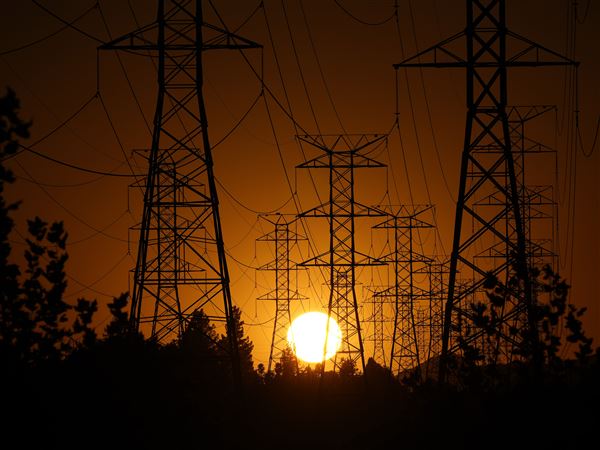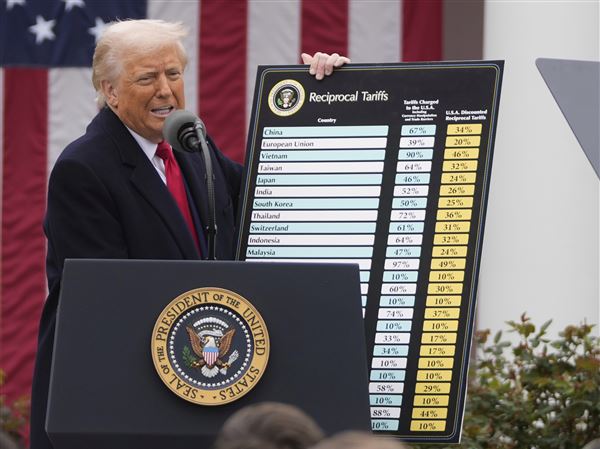Editorials from around Pennsylvania:
TOO LATE TO BED, TOO EARLY TO RISE: DISTRICT OFFICIALS NEED TO SERIOUSLY CONSIDER LATER SCHOOL START TIMES FOR TEENS, Jan. 31
Penn State researchers are far from the only ones who have found that later high school start times would better serve the adolescent internal clock.
This isn’t a matter of “babying the future generations,” as one commenter on LancasterOnline put it.
It’s a matter of biology.
We know what many of you are thinking, because we’ve had the same thoughts ourselves: “Our kids learned to go to bed earlier, other kids can, too — parents just need to set household rules.” ‘‘Farm kids get up before dawn and somehow, they survive.” And so on.
But we believe in research rather than anecdote. Individual stories are interesting but not conclusive. And the research is clear on this.
At about the time of the onset of puberty, most adolescents experience a shift of up to two hours in their sleep-wake patterns, according to the American Academy of Pediatrics.
Kyla Wahlstrom, a senior research fellow at the University of Minnesota, offered the clearest explanation of this phenomenon in an article on the website The Conversation.
“At the onset of puberty, nearly all humans (and most mammals) experience a delay of sleep timing in the brain. As a result, the adolescent body does not begin to feel sleepy until about 10:45 p.m.,” she wrote.
In teens, Wahlstrom noted, “the secretion of the sleep hormone melatonin begins at about 10:45 p.m. and continues until about 8 a.m.”
Teens can’t easily fall asleep until melatonin secretion begins — and can’t fully wake until it stops.
So we can tell them to go to sleep before 11 p.m., but their brains won’t cooperate. If they fall asleep at midnight, they will get six or so hours of sleep before their smartphone alarm sounds.
The upshot: We’re forcing kids who get far less than the recommended minimum of eight and a half hours of sleep to wake before dawn and get on the bus — or, more alarmingly, to get behind the wheel and drive groggily to school before the morning bell chimes.
As Geli noted, a six-year study conducted by the Centers for Disease Control and Prevention found that a scant 6.7 to 7.7 percent of female high school students and 8 to 9.4 percent of male high school students get at least the recommended nine hours of sleep per night.
Even if you don’t have a kid in high school, it should alarm you to know that you’re sharing the road with a great many sleep-deprived teens. Drowsy driving can be just as lethal as driving under the influence. And, we should note, motor vehicle fatalities are the leading cause of death in teens, according to the CDC.
So yes, we think Lancaster County school districts ought to consider starting high school later in the morning. We’ve heard from school administrators all the reasons — bus routes may need to be added, athletic schedules would have to change, etc. — why such a change would be difficult. But it wouldn’t be impossible.
As the Carlisle Sentinel reported earlier this month, parents also had concerns about Mechanicsburg Area School District’s plan to shift school start times. Those concerns ranged from “before- and after-school care coordination and what impact the changes would have on children who walk to school.”
Mechanicsburg Superintendent Mark Leidy had what seemed to us was the perfect response: “We want to prove to you that the option we’re putting on the table has many solutions. We’re going to open it up to those (parents) who think they have unique circumstances (with this plan). We’re saying, ‘Let’s talk about it and see what options are open.‘ “
Now, with about 4,000 students, Mechanicsburg is a much smaller school district than, say, Penn Manor, which has about 5,300 students, and Hempfield, which has more than 6,800. But it has nearly as many students as Conestoga Valley. And its student population outnumbers that of Lampeter-Strasburg School District by nearly a thousand.
As Geli reported, Avonworth School District in Allegheny County moved its high school start time this year from 7:15 a.m. to 8 a.m. The schedule change has led to 500 fewer absences from August to November, Avonworth Superintendent Tom Ralston said.
That Pittsburgh-area school district had to add two school buses for about $40,000 to accommodate the new schedule. The cost of adding buses is no small consideration for school officials. We get this.
But there are bigger concerns at stake here. The American Academy of Pediatrics wants school districts to consider later high school start times because it says chronic sleep loss in teens can lead to a raft of problems, including increased risks for depression, anxiety and suicidal ideation, as well as obesity and other health issues, impaired academic performance, poor school attendance and higher dropout rates.
Our high school students aren’t snowflakes in need of coddling. They’re exhausted. And getting wearier by the day.
__LNP
Online: http://bit.ly/2npNa0H
GET MOVING JUSTICES: GERRYMANDERING DECISION NEEDS AN OPION, PRONTO, Jan. 31
If the state Supreme Court wants the Legislature to draw a new map of congressional districts by Feb. 9, it needs to release its opinion in the case pronto. Lawmakers are entitled to understand the court’s thinking as they hustle to meet a rapidly approaching deadline. If legislators fail to deliver on time, the court has indicated that it will redraw the districts itself. That would usurp the Legislature’s authority, setting a terrible precedent, and must be rejected as an option.
In a case brought by members of the League of Women Voters, the court ruled Jan. 22 that the state’s gerrymandered congressional district map, drawn by the GOP-controlled Legislature after the 2010 census, “clearly, plainly and palpably violates” the state constitution. The court said it may not be used in the spring primary, when all 18 of Pennsylvania’s U.S. House seats — only five of them currently held by Democrats — will be on the ballot.
The court, comprising five Democrats and two Republicans, gave the Legislature until Feb. 9 to redraw the districts in time for the primary, saying it would do the job itself if lawmakers missed that deadline or if Gov. Tom Wolf, a Democrat, had not given a new map his approval by Feb. 15.
In its briefly worded order, the court said the reconfigured districts must be compact, contiguous and as equal in population as possible, with political subdivisions — such as counties, municipalities and wards — divided only when strictly necessary. But the court has not yet issued its full opinion, which is likely to provide more detail about what the justices want in a new map and additional insight into the constitutional violations they saw in the one they threw out.
While lawmakers could make some guesses — based on their familiarity with the justices, earlier Commonwealth Court proceedings in the case, the plaintiffs’ filings and the national discussion around gerrymandering — that isn’t fair. With the timetable as tight as it is, lawmakers are entitled to the opinion with all due speed. If they guess wrong, they’ve essentially taken themselves out of the game under unusual rules set by the referees.
In a case this important, the court should have issued its opinion at the same time as its ruling ordering a redrawing of the districts. The longer this stretches out, the more it looks like the court hasn’t established the legal foundation for its order, making it more a fiat than anything else.
Instead of releasing its opinion, the court on Jan. 26 issued another order hiring for itself a consultant “in anticipation” of the possibility that the Legislature won’t get the job done in time. In addition to hiring the consultant, Stanford Law School professor Nathaniel Persily, the court specified data that it wanted to be included with any map presented for lawmakers’ consideration.
The court rejected the Republican lawmakers’ request for a stay. The Republicans have asked the U.S. Supreme Court to intervene, and Justice Samuel Alito gave the League of Women Voters until Friday to respond. In the meantime, it’s difficult to mount a legal challenge without an opinion, and lawmakers have to proceed as if the state court ruling will stand.
Gerrymandering subverts the political process by allowing politicians to choose their constituents, and it creates safe seats that contribute to gridlock in Washington. The state court’s order throwing out Pennsylvania’s political map is cause for celebration. The court shouldn’t sully the moment now with behavior that raises new allegations of partisanship.
Redistricting is a legislative process, and the court mustn’t appear to be priming the Legislature for failure so it can usurp the role. That would just fuel Republican claims of a judicial power grab on behalf of the Democratic Party. The court should release its opinion — burn the midnight oil to get it written, if necessary — so that the Legislature can produce a fair map that wins Mr. Wolf’s approval and passes the court’s smell test.
__Pittsburgh Post-Gazette
Online: http://bit.ly/2E2Fsmw
New Jersey and Delaware know full well the dangers of President Donald Trump’s reckless plans to open their coasts to offshore oil and gas drilling. Drilling activities endanger life on land and in the Atlantic Ocean. And, an accident would devastate the states’ tourism and fishing industries.
In their battle to protect the shore, both states would be wise to look to California, which is making itself ugly for the oil industry.
California state Sen. Hannah-Beth Jackson is pushing a bill to ban pipelines running from the sea to the shore. States have control of the sea from the coastline to three miles out. Legislators from here should call Jackson for a copy of the bill. Also in California, 18 cities and nine counties have already banned construction of onshore oil terminals and pipelines without a public vote. Towns in New Jersey and Delaware can stop the industry from building infrastructure on the shore with zoning, health, and environmental codes that are designed to protect public safety.
California is ahead of the East Coast, in part, because it has a painful history with offshore drilling. In 1969, more than 3 million gallons of oil gushed out of a Union Oil rig off Santa Barbara, causing widespread devastation. The incident started the movement against offshore drilling that has kept the coasts safe from the dangers of offshore rigs.
But Gulf States had no such sense of caution and embraced an industry that handed them the worst offshore oil drilling accident in American history. Few can forget the explosion on the 2010 BP Deepwater Horizon rig in the Gulf of Mexico. Eleven workers died and 4.9 million gallons of oil spewed into the sea killing marine plants and animals as well as over one million birds. The spill also shut down tourism and fishing in for months.
But Trump’s desire to help the fossil fuel industry choke out its last breaths of profit outweigh the risks. He’s even upping those risks by rolling back safety regulations put in place after the Deepwater accident.
Beyond rig accidents, the simple transport of crude endangers coastlines. In 2004, for example, a tanker hit a submerged anchor in the Delaware River and spilled 265,000 gallons of oil, polluting the shores of Pennsylvania, New Jersey, and Delaware.
In a backhanded way, Trump’s Interior Secretary Ryan Zinke acknowledged the dangers when he exempted Florida, home to Trump’s Mar-a-Lago golf resort, from the drilling lease sale on Jan. 9.
The far better policy coming from Washington would be to encourage safe, clean, and cheap energy forms like wind, solar, and geothermal. They’re becoming economically competitive with oil and coal, which pollute the air and water. But that’s not on the horizon with this administration; that is why New Jersey Gov. Murphy and Delaware Gov. Carney, along with their respective legislatures and local governments, are the first line of defense against offshore drilling.
The states should tie up this threat to the shoreline with a giant bale of red tape and beach it.
__Philadelphia Inquirer
Online: http://bit.ly/2DQ3G09
CONTROLLING MASS CALLS IMPORTANT, Jan. 31
In the weeks and months ahead, many — if not most — Pennsylvania telephone customers could be asking “What’s not to like?” about legislation in the state House of Representatives aimed at protecting them from falsified caller identification displays that oftentimes “greet” them when their telephone starts ringing.
On Jan. 23, the House Judiciary Committee approved the moving-forward of the legislation — House Bill 979 — which would make it illegal for people to use specialized equipment to change the caller identification information displayed on call recipients’ telephones.
But there’s another important aspect of what’s referred to as the “spoofing” issue that needs to be dealt with as well: beefing up ways and technology to identify those responsible for such calls.
If a successful crackdown on the perpetrators isn’t possible, or can be achieved only in rare, isolated instances, the legislation could end up as another example of a remedy lacking bite — some people would say, “toothless.”
Not only is the falsification in question annoying to most people, it also makes people suspicious of legitimate, well-meaning calls emanating from honest businesses and individuals.
And, for people who significantly lower the volume of — or shut off — their phones’ ringers amid their frustration over receiving calls from people or entities disguising their true identity, the prospect of not knowing that a call dealing with an emergency or something else important is being received increases the prospects of missing the call, and regretting that the call was missed.
The situation also is hurting those who provide telephone service; some former customers say the reason they canceled their landline phone service was because of having become fed up with being inundated with such devious, despicable calls disrupting meals or many other aspects of their home life.
About HB 979, House Judiciary Committee Majority Chairman Ron Marsico, R-Dauphin, said, “We are hearing about hundreds of Pennsylvania residents who are being contacted by deceptive people that, through the use of spoofing equipment, are able to pretend to be a local bank. They then ask whoever answers the phone for account details and other financial information. They are stealing information from innocent people and causing real damage to their lives.”
The proposed legislation would amend current law by adding a misdemeanor-level offense of false caller identification information display. The measure stipulates a $2,500 fine and up to one year in prison for a first offense, and a $5,000 fine and up to two years in prison for second or subsequent offenses.
The measure does not apply to blocking of caller identification information tied to law enforcement, or to intelligence and security agencies.
But again, if the proposal becomes law, the big and difficult challenge will be apprehending the culprits responsible for such calls; probably no one has compiled a reliable estimate of how many big-volume spoofers might be “out there.”
Still, this effort should be allowed to move forward.
People paying for telephone service shouldn’t be exposed to such annoyance, harassment or fears that many times put their sensitive or confidential information at risk.
__Altoona Mirror
Online: http://bit.ly/2BGLZhG
DON’T LET GUARD DOWN WITH TEENS, E-CIGARETTES, Jan. 31
It’s the most comprehensive report yet on nicotine-containing e-cigarettes. Comprehensive, but hardly conclusive. On the contrary, a recent report by the National Academies of Sciences, Engineering and Medicine is as noteworthy for what it won’t say as for what it will. It will say that vaping, or smoking e-cigarettes, is safer than smoking traditional cigarettes. But it won’t say that vaping is safe.
It will say that vaping has benefits for those trying to quit smoking. But it won’t say that e-smokers trying to stop traditional smoking will succeed in quitting.
It will say that switching to e-cigarettes lessens smokers’ contact with tar, chemicals and carcinogens, all of which can kill. But it won’t say that vaping has no ill health effects.
The report - a conglomeration of credible existing research - will say that second-hand particulates can be harmful to human health. But it won’t specify or quantify that harm, citing - as it does with the other unknowns - a dearth of research on the still-rather-new smoking devices.
And in what is the report’s most shaking finding, it will say that vaping with nicotine-containing e-cigarettes can be addictive, and can increase teenagers’ future risk of becoming smokers. That, by the way, is a first of sorts; it’s at odds with much existing research.
It will say that e-cigarettes are associated with those same teens smoking at least one real cigarette later in their lives.
But it won’t say that using e-cigarettes prompts teens to advance to full-blown smoking. And it won’t assert that its moderate evidence is, in and of itself, strong enough to hang any policy hats on its conclusion.
Still, given that almost 1.7 million teens, more than 11 percent of all high school students, have said they’ve recently vaped, even this wobbly finding is formidable - and far too serious to ignore.
“The evidence was substantial that this association was consistent across a number of research methodologies, age ranges, locations, and research groups in and outside the U.S.,” Adam Leventhal, University of Southern California medical professor and one of the report’s authors, told The New York Times.
Leventhal said his team’s research of existing literature was exhaustive, spanning the world’s studies on the subject. His group’s finding contradicts what had been the prevailing assertions, including that of the British Royal College of Physicians.
“Concerns about e-cigarettes helping to recruit a new generation of tobacco smokers through a gateway effect are, at least to date, unfounded,” says that group’s website.
So what to make of all these sort-of-bad, sort-of-not pseudo-conclusions?
Well, we should neither make too much nor too little of it.
We should certainly not panic and presume teen vaping provides a wide and paved path toward serious later smoking. Nor should we be cavalier by supposing that these fashionable, tobacco-free devices are perfectly safe and nonaddictive.
“What the report demonstrates is that despite the popularity of e-cigarettes, little is known about their overall health effects, and there is wide variability from product to product,” Matthew L. Myers, president of Campaign for Tobacco-Free Kids, told The Times. “That makes the case even stronger for FDA (Food and Drug Administration) regulation.”
It also makes perfect sense.
__Altoona Mirror
Online: http://bit.ly/2nmAuYs
First Published: January 31, 2018, 5:00 a.m.
Updated: January 31, 2018, 7:40 p.m.














